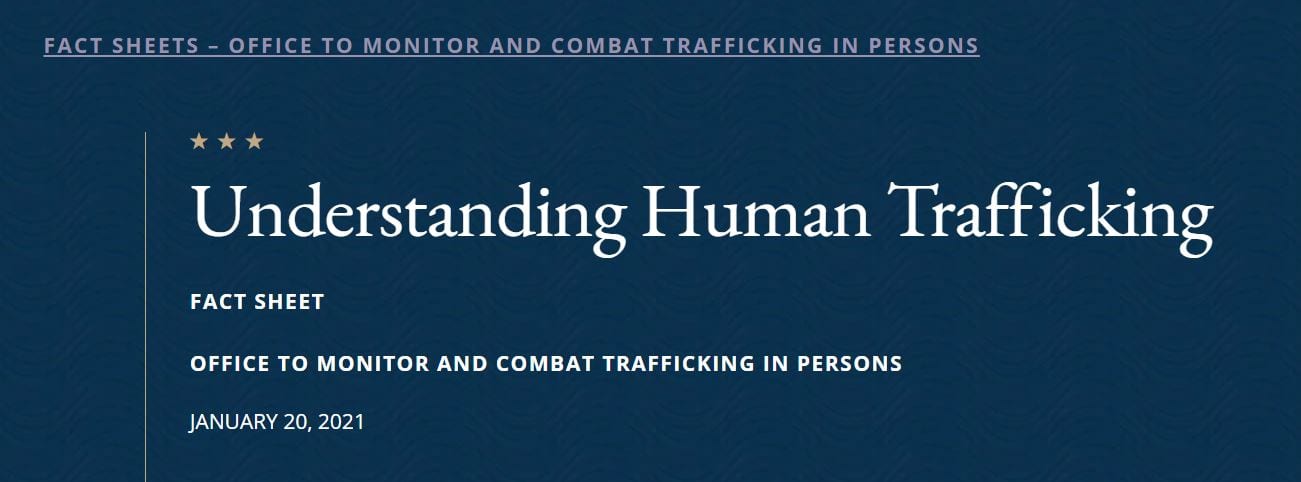
Understanding Human Trafficking – Fact Sheet
“Trafficking in persons,” “human trafficking,” and “modern slavery” are umbrella terms – often used interchangeably – to refer to a crime whereby traffickers exploit and profit at the expense of adults or children by compelling them to perform labor or engage in commercial sex. When a person younger than 18 is used to perform a commercial sex act, it is a crime regardless of whether there is any force, fraud, or coercion.
The United States recognizes two primary forms of trafficking in persons: forced labor and sex trafficking. The basic meaning of these forms of human trafficking and some unique characteristics of each are set forth below, followed by several key principles and concepts that relate to all forms of human trafficking.
More than 175 nations have ratified or acceded to the UN Protocol to Prevent, Suppress and Punish Trafficking in Persons (the UN TIP Protocol), which defines trafficking in persons and contains obligations to prevent and combat the crime.
The United States’ Trafficking Victims Protection Act of 2000, as amended (TVPA), and the UN TIP Protocol contain similar definitions of human trafficking. The elements of both definitions can be described using a three-element framework focused on the trafficker’s 1) acts; 2) means; and 3) purpose. All three elements are essential to form a human trafficking violation.
Forced Labor
Forced labor, also referred to as “labor trafficking,” encompasses the range of activities involved when a person uses force, fraud, or coercion to obtain the labor or services of another person.
Read more here.
